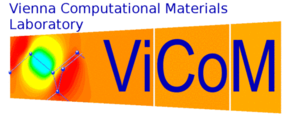


This project has been discontinued. Their work continues within projects P13 and P14.
Processes occurring in soft matter systems are typically characterized by wide ranges of length- and time-scales. This project was dedicated to the application and development of theoretical and computational concepts to address faithfully such multiscale problems as they arise typically in the study of nucleation and self-assembly processes of colloidal systems. Work carried out in this project was strongly motivated by the fact that soft matter systems offer exciting new possibilities to study fundamental condensed matter phenomena ranging from melting and freezing [Zahn 1999, Gasser 2001] and the dynamics of glasses [Nugent 2007] to the properties of defects in crystals [Shall 2004, Lechner 2009]. In striking contrast to molecular systems, these materials can be manipulated with unprecedented “atomic” resolution [Prasad 2007], providing a complete picture of how macroscopic materials properties arise from the underlying microscopic processes. Since the interactions between the particles can be controlled and tuned to a large degree it has become possible to create novel materials that self-assemble into structures of increasing complexity.
Here, we have carried out research along the following strongly intertwined lines:
(i) starting from a monomer-resolved (i.e., microscopic) model of DNA-strands we have developed effective potentials between DNA-coated colloids; based on these interactions we were then able to study phase separation on a quantitative, macroscopic level;
(ii) self-assembly processes of typical soft matter systems, ranging from patchy colloids or polymers to charged particles and deformable macromolecules (with a rich internal architecture) have been studied under equilibrium and non-equilibrium conditions;
(iii) a broad variety of nucleation processes was investigated, including homogeneous freezing of supercooled liquids and crystallization on seed particles.
While for some of our work modifications or improvements of existing techniques were sufficient, in other cases the development of new computational methods was indispensable. More specifically, we have invented the interface pinning approach, a new techniques that allows an efficient and reliable computation of free energy differences between phases of a material and of the growth rate of interfaces; by investigating a variety of systems (ranging from colloidal suspensions to metallic systems) we have demonstrated the broad applicability of this approach; further, we have developed a neural network based method for the detection and classification of local crystalline structures and have applied it to the formation of hexagonal ice in supercooled water. Based on our computational expertise, we have also cooperated with other projects on the prediction of the crystal structure of metals (P02), proton ordering in cubic ice (P02), the formation of precipitates in alloys (P10), and rare switching events in magnetic nanostructures (P12).
| Dellago, Christoph Principal Investigator, P11 | University of Vienna Compuational Physics |
| Kahl, Gerhard National Research Partner, P11 | Vienna University of Technology Institute of Theoretical Physics |